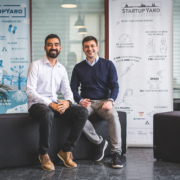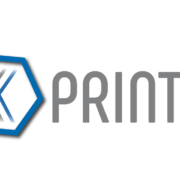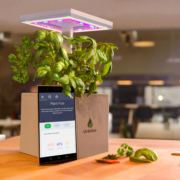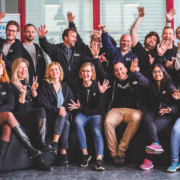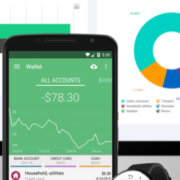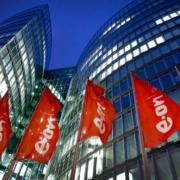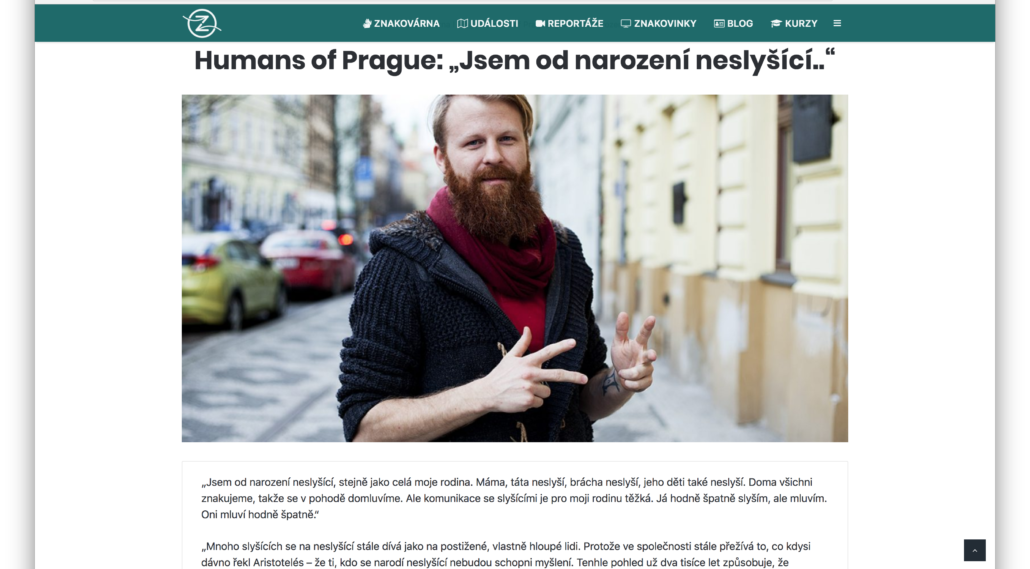Meet Printsyst: The Only AI 3D Printing Expert You’ll Ever Need
/in Interviews, Startups, StartupYard News/by StartupYardPrintsyst co-founders Itamar and Eitan Yona are brothers, and they represent our first startup from Israel as members of Batch X. They are also the 3rd generation in a family of a printers, carrying their family tradition into the realm of 3d printing. Their startup, Printsyst, is for companies that use 3D printing, but don’t have internal expertise. PrintSYSt is an AI-powered management solution that provides a complete automated 3D printing workflow. Unlike standard existing solutions, PrintSYSt requires no expertise, allowing users to focus on design instead of production.
Itamar, the older brother at 34, plays the role of CEO, and has a degree in Electrical Engineering. He provides professional engineering advice, lectures, and workshops about additive manufacturing worldwide. His articles being published on well-known industry magazines and blogs. Eitan on the other hand focuses his attention on marketing and communication, and can be found frequently on the team’s YouTube channel, connecting with experts and educating his audience on 3D manufacturing.
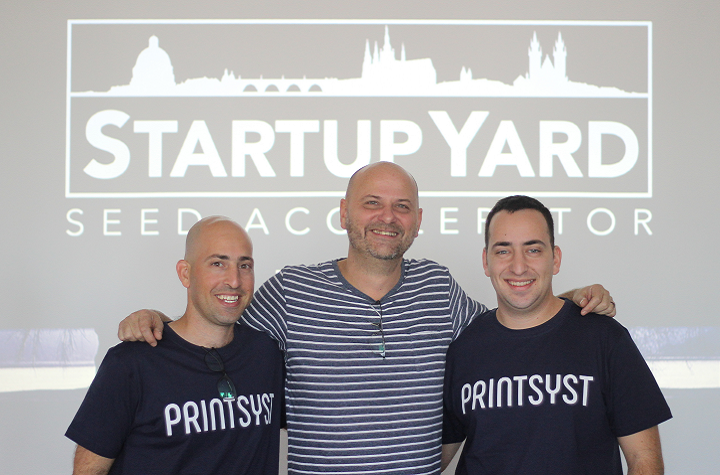
Printsyst Co-Founders Itamar (left) and Eitan Yona (right), with StartupYard CEO Cedric Maloux
Hi Eitan and Itamar. You are not actually our first pair of siblings at StartupYard, but I think people will be interested to know how it is you both came to make 3d printing your focus in life. What’s it like to do this together?
We will answer these questions in one voice, because that’s really the way we are as a team. We know each other so well, it’s like one hand working with the other. It’s muscle memory.
Working with family is unlike anything else. You can have colleagues, and you can have people whom you rely on and you trust, but these are not your family. We are a 3rd generation family in this business. Our grandfather was a printer, our father is a printer. We are carrying that tradition forward, and in that sense we see ourselves as a part of that tradition, just bringing it forward.
Our father taught us growing up that individually, we would never have the strength that we have together. Perhaps you can tie this in with the history of our country and people as well. We have to cooperate as one to get things done. As brothers we are able to learn collectively, and to multiply our strengths.
That is the secret sauce in a family business, which is that you are building upon a foundation that is rock solid. In most tech startups, we think this is missing. That sense of belonging to the industry and the sense that you are born to do what you do is very appealing. Our family is not just in the printing business, but rather we are in the technology business, and always have been. The technology just changes. The business part is not so different.
It’s fun as well. We can laugh at and scream at each other, and change directions in 10 seconds. We don’t have to forgive each other for every mistake. We can be angry, and we can share our feelings with each other. One can rely on the other.
Is there a downside to the family dynamic?
Sure. We are very monomaniacal about our work. It can be hard to stop talking about work and switch to other topics. How are your kids? What did you do this weekend? We get very comfortable talking about work topics, to the point where the separation of work and life is a bit blurry.
But again, this is in the family for generations. Our parents worked together all our lives, with our grandparents too. Life and family is business. There is no distinction sometimes. I don’t know if you consider that healthy. Maybe it’s good for some people and not good for others. We make it work. We are happy with what we do now.
Do you think that family background, being a 3rd generation printing family, gives you an advantage over others who come into this business from a different background, such as in computer science or manufacturing? What are the intangibles of a printer’s life experience?
So, it’s important to emphasize that we are technologists, by tradition. Printing is just the technology we know. A family business is not something that should stay the same for all time. That is not progress. Instead, a family business gives you the roots you need and the stable base you need to grow with much higher confidence and the right connections from the beginning.
It may seem like we are departing from tradition. Our father and grandfather were in 2D printing (Printing Press). We are in 3D. It’s a different world. However, our father made the switch from offset to digital printing. That was equally difficult, and equally transformative in its own time. The needs of customers change continually, and having a deep empathy and respect for people is something that takes a lot of life experience.
In that sense, what you do in 3D printing is no different at all from any other kind of printing. People always have the same flaws and the same needs from you. You are the person helping them to take advantage of the technology and see what is possible for them. If 50 years ago it was that they could print a photo or a book, today it’s that they can print something like a pair of glasses. Still, you serve a human need: to start a small business, to realize a creative dream.
That human level is where everything important is happening. The business that can get down to really sharing a bond with the customer and understanding and appreciating them for what they are, is going to be successful. The money will follow. That’s our view.
It seems rare to me in technology to see people follow their parents as role models and mentors
Yes, it is more rare than it used to be. Technology is no longer seen as a trade, but rather as a skillset. So you are not a craftsman or a journeyman, but an engineer. That brings the focus out of customer-minded, traditional practices, and toward institutional ideas and practices. The engineer thinks as the university teaches him to think. Not as his father teaches him to think.
That is not always bad of course, but there is a reason that trades have been passed down from
parent to child for all of time. In the formalization of some knowledge, you will lose that which cannot be written down. I can teach you to code out of a book. I cannot teach you to run a business out of a book. I cannot tell you what use that code will be once you know how to do it. That is experiential, and it is something people can get from their parents, and should get from them.
So in a sense you would like to see the tech business be more conservative?
Maybe. What does this mean, conservative? There is simply a great deal of value in growing up in an industry, just as there is value in coming into an industry fresh with a new perspective. Both approaches must always be considered.
In the “entrepreneur industry” today, ego is heavily monetized. Right? It is all about the founder and the singularity of them and their vision, and how no one else is the same as they are. No one can do what they do. But this is nonsense. This is not how knowledge is gained in the real world or passed on for our shared benefit. We are not islands to ourselves. If you build to last, then what you build is more than you are.
When you look to the great fortunes of the 21st century, it is sad in a way that they belong to people who are in many ways isolated in time and place. They have no sense of their past or future. Disruption in the sense that the technology industry means is often just an ego trip. Technology always changes. It is a question of whether we are better as people, or worse. Do we do good for people, or not?
What attracts you to working on 3d printing in Europe? Why not somewhere else?
Well, of course we were attracted to StartupYard! But also the fact that Europe is a really fertile ground for change and innovation in 3D printing. We see it as somewhere that we can bring a lot of value, and where businesses and people are ready to take advantage of our technology.
We love Israel as well, so we will always be home there. However, 3D printing is not like the old printing business. It is language independent. It is global and digital. So we must be where other companies are doing this work. The business may be global, but being physically present is still very important. We have to make ourselves unavoidable and inescapable for the future of 3d printing.
Let’s talk about the technology because I think most people see 3d printing in a really simplistic way. What is the current state of 3d printing, if you can provide some analogy to traditional printing technology? Are we in the Gutenberg days? The Franklin era?
Yeah, that’s a good question. So decades ago, when our father was taking over the family business, there was no really good software drivers available for professional, quality printing. People who were going digital were doing this stuff on their own. You had to have a very good reason to do that, because the change was very drastic. It was essentially taking everything that you know about printing, and changing all of it.
You want to print digitally? Ok. You need a team of developers, hardware engineers, you need a lot of money to research and test. You basically have to start from zero. People cannot imagine this now, because today you don’t think about PostScript and print drivers, and these things that were hell on people in the printing business for many years.
You have to consider that digital transformation is not a new phenomenon in 2018. It has been going on for decades already. The journey from an offset press, with physical plates printing pages, to a digital laser printer is an enormous change. It is like going from steam power to electric. Everything must change.
Now we face the same level of challenges in 3D printing. To digitize the making of 3D objects. If you will, I think we are in the offset printing era right now of 3D objects. You have injection molds. You have industrial processes that take huge investment and planning to work. You do have 3D printing happening on a small scale, but you lack all the hardware and the essential drivers between the finished object, and the technology itself. And if you are lucky enough and have access to 3D printing, you still need to follow a long learning curve.
That is the problem we are solving at the end of the day. The ease with which you print a page of paper today should be, maybe 15years from now, the same ease you experience printing a pair of glasses or a new doorknob. Whatever you need. Remember printing evolved from handwriting to the printing press, to the digital laser printer in more than 500 years. Manufacturing also is taking a journey from the handmade to the ubiquitously available object in a similar space of time.
Obviously there have been some hype bubbles surrounding 3D printing in the last few years. Do you think we are poised for a major step in the adoption of these technologies now?
It’s true, particularly maybe 10 years ago, that there have been some hype and disappointment around 3D printing. This is necessary to the process, And predictable in a way.
This is a normal thing for new technologies on the adoption curve.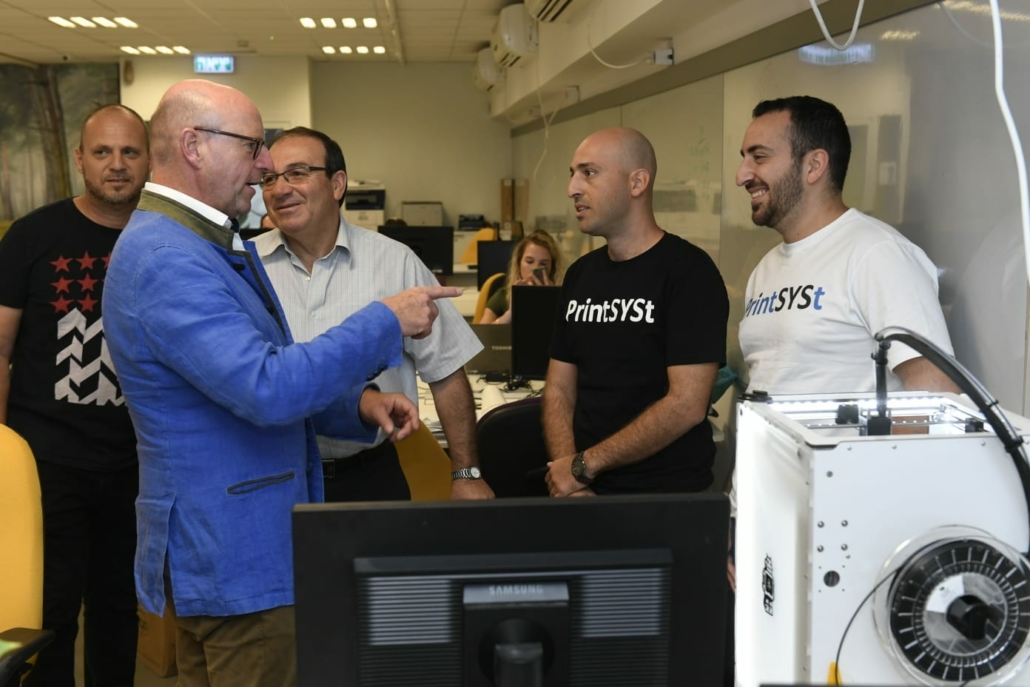
There were lots of ideas, and people doing very cool things with 3D printers, but the technology has not jumped to mainstream adoption for a few specific reasons.
One of them is the materials being used, and that is changing very quickly. People found pretty quickly that the variety of objects and functionalities was limited by the material. Color, strength, consistently, etc. There are many new approaches coming to the physical printing process that will make this much easier.
On the side of software, this is what we are trying to solve. One of the problems that emerged very quickly was that there are many physical parameters to consider when you are printing an object of any size.
Unlike on a piece of paper, you have an object in 3 axis, and you must consider the 4th dimension as well: in which orientation should parts be printed, and even more, what should the internal structure of the parts be?
So that is where AI comes in?
Yes, precisely. AI is needed to run through all these potential variations in the way a thing can be printed, and select the best one for the purpose at hand. That can save a very lengthy process of having to manually determine these factors, or just guess and check to see if it works, which is what people are doing today.
Many hobbyists quickly found out that they could not move from imagining a new object to simply printing it, because the technology required more detail than the imagination supplies. You need hundreds or more parameters to print a 3D object. You must know the thickness of each component. You need to choose internal structures (honeycomb, swiss cheese?) you must know in what orientation to print, and where the piece will be separated from the printer. How fast will it be printed?
So the process of iterating these tiny details in a physical printer is very expensive and time consuming. There were many cases in which people just couldn’t produce prototypes because they couldn’t get the printer to follow a process that created a stable object. That’s a big problem in 3D printing. That’s not a physical obstacle, it’s a software obstacle.
We are using AI to sort that problem out. You have to virtually simulate the infinite combinations of possible approaches to printing an object, and find that ideal process, which is going to be absolutely unique for every single thing you print. One small change to the thickness or the length of something, and a 3D printer must be completely reconfigured to allow for printing a stable version of this new design.
That really destroys your ability to iterate, unless you can be sure that each time you print, you are getting the best version of the object you are trying to make. You can make quite complex parts in 3D printers, and in some cases these parts can serve to replace dozens of other components that were formerly separate pieces in a machine or a piece of furniture. But if you can’t figure out how to stabily print that object, then the 3D rendering is useless. It’s just an idea.
Printsyst is taking that rendering, and making it printable and stable, and useful from the first try. That’s the objective. Break the expertise barrier that stops people from using 3D printing for whatever reason. Democratize manufacturing and make it something accessible to small businesses, entrepreneurs, and individuals.
We know that 3D printing has huge applications for manufacturing and design (such as being able to rapidly build custom parts and eliminate assembly steps). But what kind of impact do you see on consumer lives in the next decade or so?
Much of the impact may go unseen for the near future, to the end user. Many things that were formerly very complex to assemble may begin to be 3D printed, such as electronic components and even parts for cars, furniture, and things like that. But you may not know the difference if you don’t know how to look for it. It will simply allow businesses to deliver these goods cheaper, faster, and in more variety.
Later on, as this technology is further democratized, it can have the same effect that widespread printing had on the spread of literature and businesses around the world. The ability to create something fast, cheap and in good quality with minimal equipment also means you can take a lot of creative risks, and many microbusinesses may be born. Already you see this among some designers, using 3d printing as a bit of a gimmick. It will not be a gimmick forever.
Ultimately, we probably get to the point where an individual is able to order or print parts and object themselves that are customized to their exact needs or the needs of a situation. You know what size shoe you wear, but I bet you don’t know the distance between your temples. So why don’t you? Because knowing that, you can create a pair of glasses that fit you perfectly.
3D printing will mean “mass customization.” This means less waste of energy and materials, less cost to transportation, and ultimately we believe a better environment in which fewer resources are ultimately wasted by overproduction and under-customization.
How can companies who are employing 3D printing start to take advantage of your technology? Where do they get started?
Right now, we are working with small and medium sized enterprises who are using 3D printing to develop and produce new products. These companies don’t have a lot of internal 3d printing expertise, but can bridge that gap with Printsyst.
We also are interested in working with designers, and other entrepreneurs or engineers who want to use 3D printing, but again, don’t want to lose a lot of time learning how to get the most out of a printer or a particular design. We would love to support efforts to build low cost housing, and there are currently many needs from many different types of printers to get them to run more efficiently, and to optimize designs on the go, making each printed part perfect for its exact position and purpose.
Some industries we see getting interested are especially interior designers, architects, and automotive repair as well. 3D printing is great for refurbishing cars or making customized components, so we should see a lot more interest in that direction. Replacement parts, particularly, can be made much faster and exactly to fit.
In the long term, we really believe this technology is going to penetrate everywhere. Eitan spent his military service on a submarine in the Israeli Navy, working mostly on repairs. Imagine having a 3D printer in a submarine so print the exact parts you need. Stock becomes a much easier logistical issue.
Meet Urbigo: Your First Smart Home Garden from StartupYard Batch X
/in Interviews, Life at an Accelerator, Startups, StartupYard News/by StartupYardWith each new batch of startups at StartupYard, we run a series of detailed interviews with the founders to give our community a sense of who they are, and how they see the world they’re trying to change. Last week we announced 7 new companies in StartupYard Batch X. Today, we jump in with an interview of Anja Varnicic, CEO and Co-founder of Urbigo, the urban smart garden company that promises to “Bring nature closer to you.”
Urbigo is a system including a small modular garden with grow lights, and cylinders for plants containing nutrients and water. The garden is controlled via an interactive mobile app, and users can get the latest advice on how to tend to their mini gardens, as well as order new plants, nutrients, and soil packs from Urbigo.
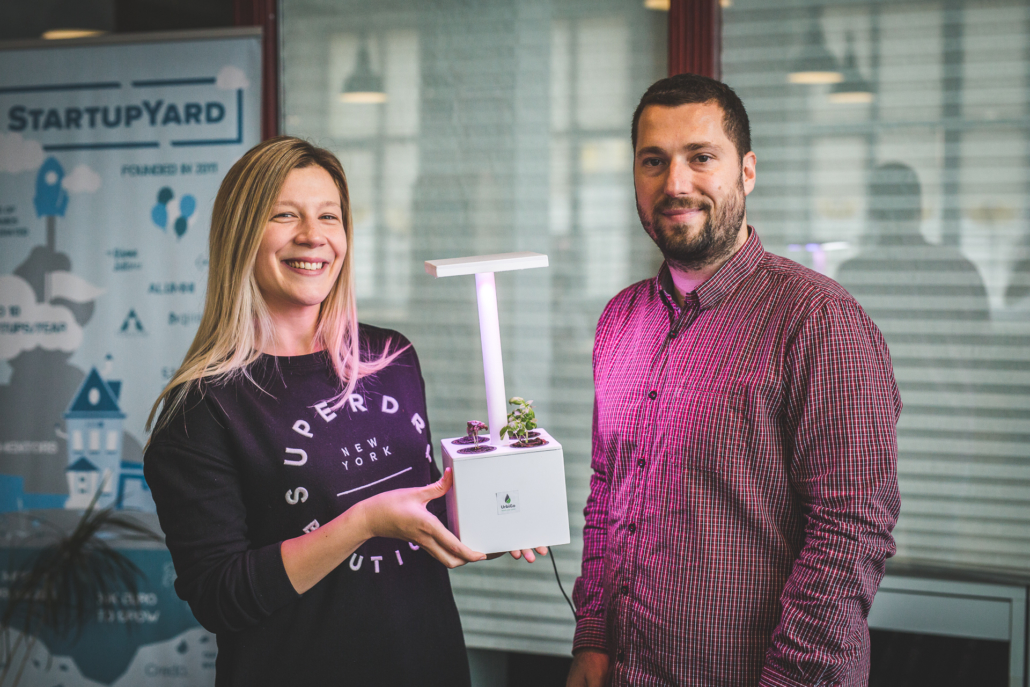
CEO Co-founder Anja Varnicic, shows off Urbigo’s Smart Garden with company CTO and Co-founder Aleksandar Varnicic

Hi Anja, coming from a plant biology background, what made you want to turn your passion for the science into a business, helping people grow plants at home?
So, as an environmental scientist, I have long asked the question: “what role do plants really play in our lives?” The truth is that we are entirely dependant on them. For oxygen. For nutrients. For flavor, and for our wellbeing. Yet modern society has moved off the farm, and now treats plants and spices as commodities that are easily fungible between one brand and another. If not from Spain, then from Brazil. If not from Turkey, then from California.
We don’t understand where our food and our air comes from anymore, and I think that is a problem for people living in cities. Of course, we can’t expect people all to live in hydroponic greenhouses in their flats, but we should get ourselves closer to the foods that we eat and the flavors that we taste.
The way of doing that for us at UrbiGo has been to bring just a little bit of green into people’s lives, and to show them the immediate benefits of tending to plants that we depend on for everything. We came up with a focus on spices that can be grown in the urban kitchen, because not only do fresh coriander or mint taste better than dried and packaged versions, but also getting something to eat directly from a plant in your home reminds you of the life behind the things that you eat, and the natural world you depend on.
As with any other true love story, the startup idea happened unexpectedly and accidentally. I wanted to make these ideas into a real business. Luckily enough, I had a chance to share my business idea with Alex, our now CTO, who had previous startup experiences. We shared our thoughts, he loved it, and boom – UrbiGo was born!
How do you think incorporating gardening into one’s everyday life can affect positive change for somebody living in a city?
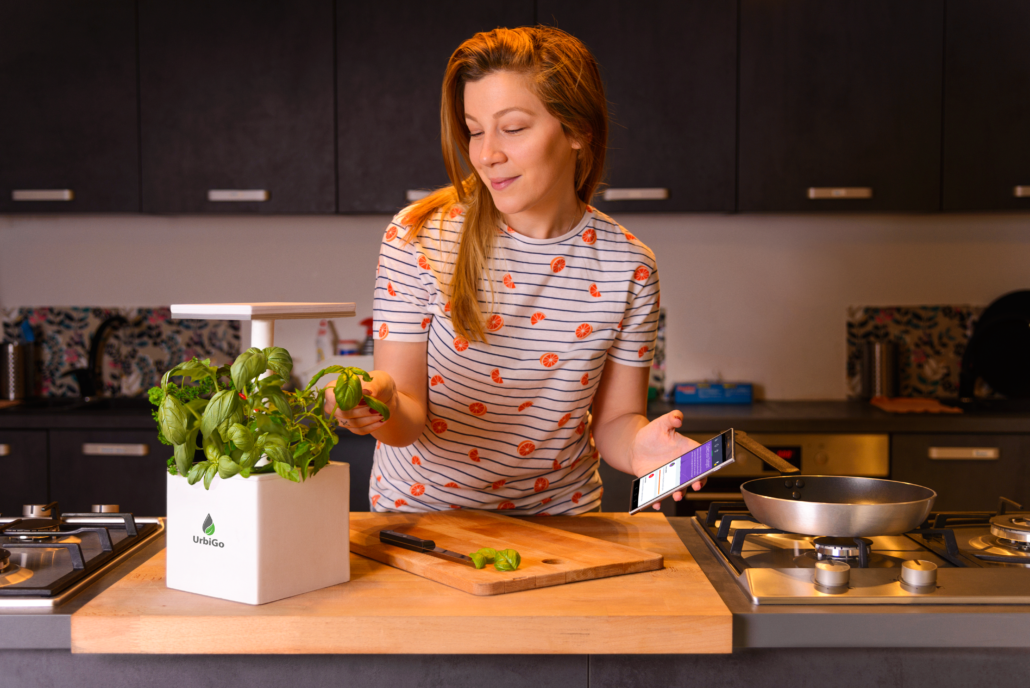
CEO Anja Varnicic is an environmental scientist and an engineer.
They say plants are the friends that always listen. And they really do. Indoor plants and urban gardening has become madly popular in the past few years because it reduces stress, make our air cleaner and our bodies healthier. And those are the thing we usually forget about or take for granted.
Having and growing fresh ingredients from your own garden is a creative activity. It brings us the same feelings we have as in making a sculpture or a painting, or writing a song. Gardening is viewed in Eastern cultures as almost poetic in nature.
For the millenial generation, we want to feel that connection to the Earth, and doing so makes us feel more responsible and more connected to nature. It makes us feel like grownups to be able to make life in an urban area where nature has seemingly little control.
I also believe that the millennial generation regrets the excessive commoditization of food. We yearn for the experience of knowing how our food is made, what it is, and how it makes its journey to our plates. So you see many different ways this is expressed in the modern consumer culture. Farm to kitchen restaurants. Farmer’s markets. Home gardens, and smart mini-gardens like Urbigo, that will help people to get back some of the control that we have lost over our diets and our environment.
]What would you say are the biggest mistakes we make when it comes to designing urban homes, and thinking about our living environment?
]Today, a larger share of younger urban residents live in rented flats or flatshares than have ever done in the past. What we see happening in cities is interior spaces being divided into smaller and smaller parts, and unless the presence of plants is part of the planning for those spaces, it ends up as a kind of afterthought.
Take a walk for example through an Ikea, which is where a lot of young people are going to get a sense of how to use their personal space… the plants are the last thing you see there. They are the afterthought. They are what you add when you have everything done.
This is backwards, I think. We need to plan more around plants, and plan to live with more plants in our personal spaces. That can affect the placement of windows, or the whole design of a building. The use of light must be reconsidered. In some cities such as Paris or Berlin now, whole buildings are being constructed with plants on their walls and rooftops. This is a good start.
Do not treat plants as a pleasant addition to your home. If you do, you will not have room for them when you decide they are the thing missing for you.
Let’s talk more about Urbigo’s products. What would you say distinguishes you from other indoor gardening solutions? What is your “killer app?”


UrbiGo isn’t just a fancy smart garden that grows fresh herbs for you – it is a community of plant lovers and enthusiasts that are changing urban gardening as we know it.
UrbiGo gardeners get to control their UrbiGo mini smart garden from their phones and learn how to grow their own fresh and nutritious ingredients in a fun and simple way through a gamified app. By completing daily challenges in the app we want to motivate and empower people to become successful urban gardeners and live more sustainably.
We take some cues from products such as FitBit, or Calm, an App for managing stress and relaxation. The way they engage millions of users into doing something good for their body and mind is something we can learn from. Tending to your garden should be a small but integral part of your daily ritual, and with UrbiGo app we want to make the process learning and enjoyable even for those who could kill a cactus.
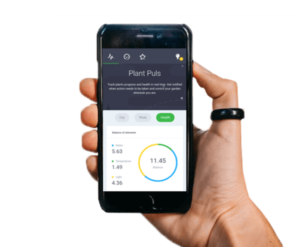
The Urbigo App
Now is an interesting time for home gardening, because today urban millennials are becoming used to healthy lifestyle daily rituals using technologies like smartphones and watches. We don’t want to suck people into paying attention to their phones, but rather to use the medium of the smartphone to help people live a healthier and more satisfying life, and live in a better environment.
Suppose that urban gardening becomes the norm for people living in cities 10 or 20 years from now. How else would you like to change the way we design our lives around food, cooking, and living spaces in the future?
Since we tend to spend most of our days in offices and indoor spaces, I believe it will be essential to stay connected with things that matter most like family, friends and nature. Plants and greenery have this power to gather people, especially in urban areas where those are scarce. And we wanted to make this values approachable and simple for our users which inspired us to create product and a network of like minded plant lovers and untaped enthusiasts.
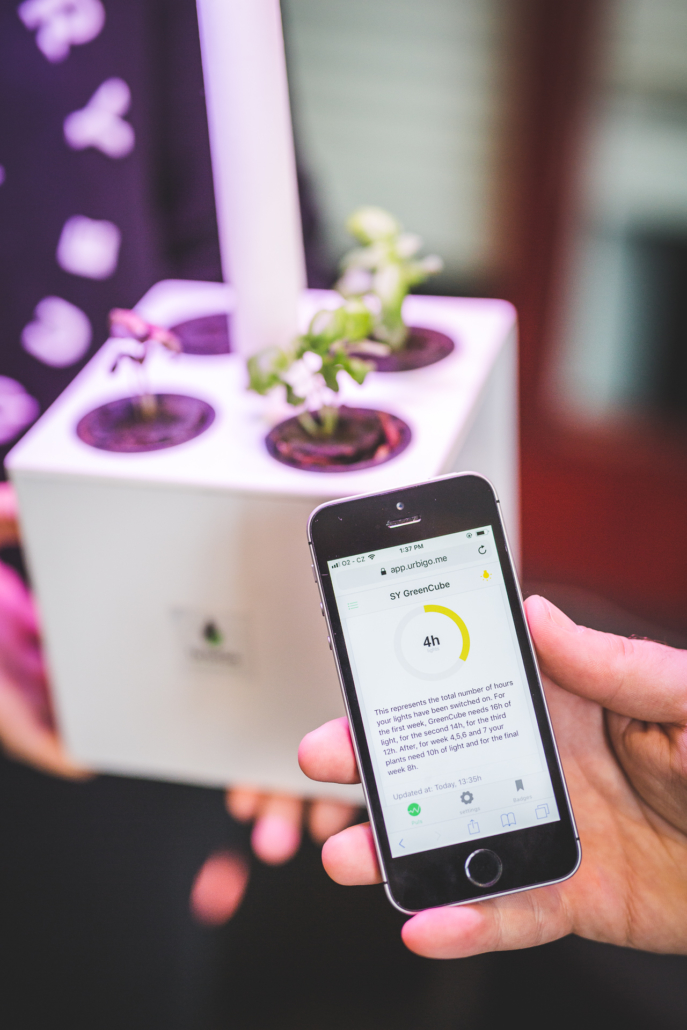
Many people living in cities rarely if ever buy fresh spices and ingredients for cooking. What are they missing out on? What are some of the concrete benefits of growing at home?Besides improving your overall health, growing and consuming your own fresh ingredients makes you connected with nature and origin of your food, that obviously doesn’t grow on market shelves and from plastic packaging.
We’ve heard lots of complaints from our customers, that store-bought herbs dry out in a matter of a few days and don’t have the fresh and intense tastes they’ve come to expect. Once you have something fresh, it can be very striking to taste the difference between that, and something not fresh. So I think people should have more choice about what to consume and when to consume it – this is why the UrbiGo app educates consumers about the benefits of “growing your own ingredients” so you can make proper decisions about your health and wellbeing. Be better informed, and make more informed decisions.
Food gardening is most of all a local and sustainable way of producing fresh ingredients and educating your family on where your food comes from. As cities transform into concrete jungles, this kind of relationship with nature will become crucial for us future generations’ well-being.
As a business, where would you like Urbigo to be 5 years from now? What will be your metric for having accomplished your mission?
We go where our customers needs are, and thus we are experimenting with the ways to include smart indoor gardening into every future home. The next logical long term step would be to incorporate UrbiGo into the smart home device network because there is a space and interest in companies for the next gen “plant device” that would improve urban health and connect with their low-friction lifestyles.
For now our goal is to get a smart garden into every home, and turn that into a network of people who are thinking much more about their well-being, health and importance of food gardening.
Imagine, using smart home technology to, in a way, bring us back to an earlier age when you would ask your neighbors for an egg or a cup of sugar. Maybe in 5 years you will be able to use UrbiGo to compete in urban gardening skills with your neighbor, grow chillies in your office desk or have a “green pet” for your kids. Maybe it will lead to people sharing much more of their domestic lives and spaces with each other, and helping each other to live better.
I think these very locally focused changes will be a very important part of the smart-home of the future. Not that you are one home connected to the whole planet, but that you are one home connected to the homes around you as well. We all share one environment, and the best way to improve it is to connect and learn together.
You’re employing a number of new technologies in Urbigo’s gardens already, like 3d printing, and LED lighting. How do you see technology making urban gardening even easier in the future?
New technologies have allowed urban gardening become more “smart” and resilient to climate change effects we are experiencing. So you don’t have to be dependent 100% on sunlight, ever changing weather conditions or your personal skills and knowledge .
But, still, people don’t want technology to do everything for them, because growing and tending plants can be part of a soothing ritual as well. I see technology as a tool to make your everyday life greener, easier but also to empower you to learn and share your urban gardening experience with others. We cannot stop urbanization, but with technology we can help people stay connected with nature.
Has there been a major surprise for you since joining the StartupYard program? Did you learn something you weren’t expecting to?
I’m not sure if it was a surprise, but we have certainly noted that the interest in smart gardening in the corporate and business spheres are also growing very fast. I think as millennials begin to move higher in large organizations, this is going to become an area where we can have a big impact with our product.
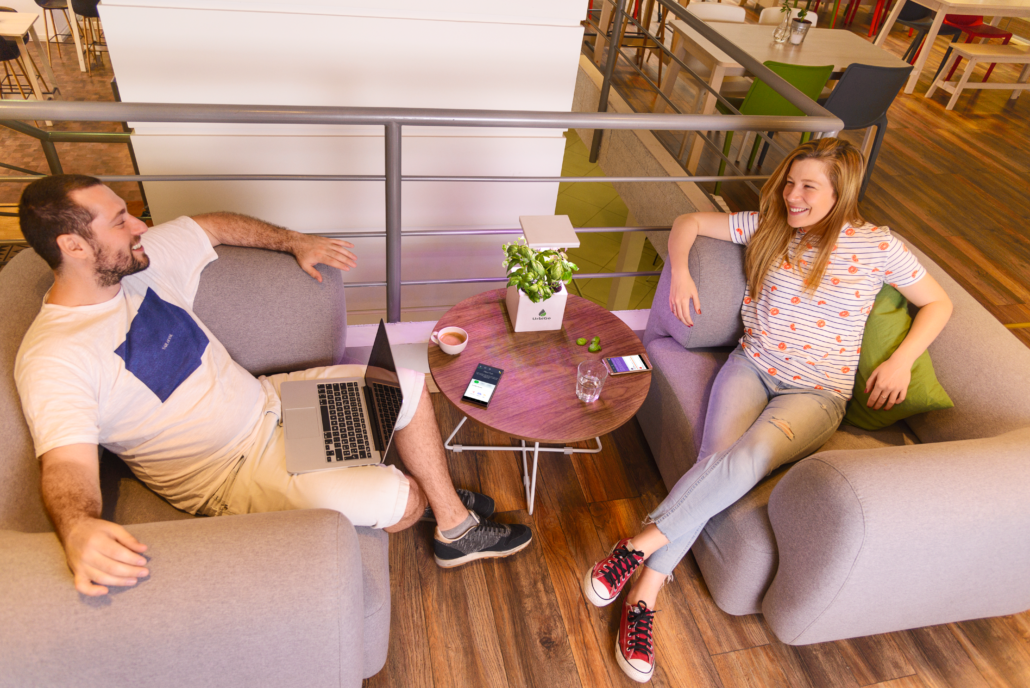
The Urbigo Founders brought some life into StartupYard this round
People spend up to half their time in offices, and in many cases, these spaces are poorly adapted to keeping people healthy and happy. Companies are understanding more and more that the total wellbeing of their employees is a vital consideration, and that if they cannot provide a better environment for people, then workers will go to those who can. I think this is very positive, and I hope to continue to raise people’s standards for their immediate environment, and inspire people to demand greener workplaces.
What have been your team’s biggest personal or professional challenges in making this project a reality?
We’ve been able to grow the waitlist for UrbiGo to over 500 people and we got major interest not just from individuals but also corporates. One of the challenges for us, as we are engineers, was to let go of some of our ideas about what people should like, and really listen to what our customers are saying about what they want.
You can come up with great ideas, but if you can’t get your ego out of the way, you will miss the experiences and stories that really define who your customers are, and how they see your products fitting into their lives. Learning this at the beginning of our startup journey was crucial to get first sales, traction and investments.
We cannot stop the technology and urbanization, but we have to design a product that accommodates our customer’s fast paced life and needs and also engages them into doing something little everyday that is good for themselves. This is an ongoing process but we are happy that so many people help us do that and share our vision.
What do people need to get started with their own urban gardens? How can they get their hands on an UrbiGo smart garden?
Since UrbiGo does not require big space, plant knowledge or time but accommodates to your lifestyle, you are basically one click away from starting to grow your mini indoor garden.
We have had testers out in the field for a whole, and we’re ready to go live. Right now, we are taking signups for a special, limited first batch of Urbigo gardens for those real enthusiasts who are ready to join our smart urban gardening community. This exclusive run will start delivery in December 2018, and the wider public will be able to order from Urbigo during the next year.

Notes on Scaling: Building the Right Team
/in StartupYard News/by StartupYardTeam building isn’t easy. The other day, one of our founder alumni was complaining to me about a problem he’s been having in his growing company. The problem is that as the company grows, he is finding it very hard to find people to join the team who feel as “engaged” with what the company is doing as his earlier hires.
He described what happens with his most recent hires: they go through the interviews, the onboarding process, the initial training and background on the product and train for the role they will play in the company… and then they lose interest or quit. He described a batting average of less than 1 in 3 new hires who “make it” on his team.
What he expects is what I think most Startup founders come to expect, even long after that expectation may be reasonable: that new hires be as excited about their business as they are, and that they each bring a creative energy to the team that contributes to the whole in an important and unique way.
It reminded me of the story of almost every founder I’ve known who grew a company beyond a certain point. Mergim Cahani, in his last interview with StartupYard, told a similar tale.
Finding the “Right Team”
Of course there are some aspects of this problem that are beyond a founder’s control. You don’t control the job market, for example. When unemployment is low, people may be less desperate to get a job, or stay in a job once hired.
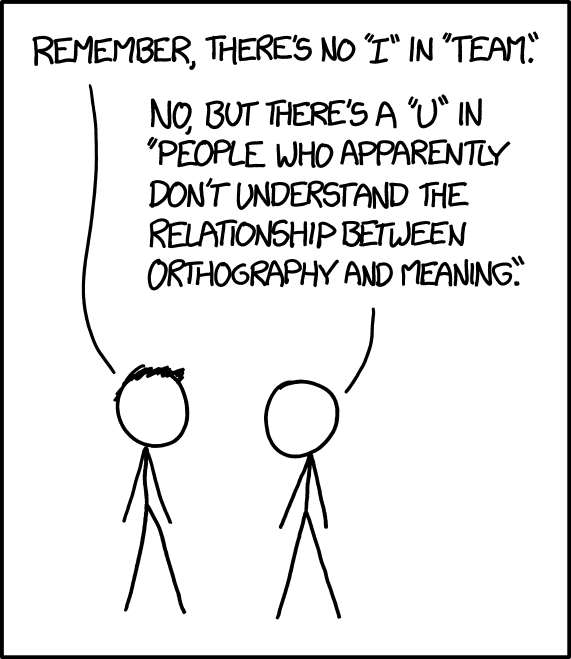
However, in the interest of focusing on things we can control, I’m going to go through a few ideas for the founder who is finding his or her later hires harder to retain or to motivate. I’ve seen these approaches work among our own startups, although you may find they don’t fit your needs in every case.
1. Hire Contractors for Jobs that Won’t Scale
While you’re busy looking for the perfect employee, you may miss out on the perfectly adequate contractor. Some founders get so focused on the idea of team building and culture making, that they forget the immediate reasons they are looking for talent is to get specific things done.
One of our alumni recently told me about how he wished, looking back, he had hired more contractors as he was scaling the business. He realized, too late, that he had hired a number of people with the idea that they were each individually a good fit with the team, and would be long-term assets to the company. But when a pivot in the business was necessary, their jobs could not be justified in the short term.
He ended up having to let people go after making a significant investment in finding the right people for his team. That caused not only a disruption in the company, but also a good deal of pain for the core team, who lost coworkers they cared about.
There is always a danger in under-investing in your team and culture, but there is also a danger to over-investing. Some jobs may simply be better left to contract workers who are not expected to become a key part of the team.
Contractors are not only easier to work with in the short term, but they may have a mentality towards their work that the company can benefit from. A focus on getting things done quickly and correctly can be important as an antidote to mission drift within a small team.
2. Question Your Typical “Hire Type”
The definition of insanity is trying the same things over and over, expecting different results.
An interesting story one founder told me was about this very problem. He had been hiring mainly younger employees, with the idea that they would bring “creative energy” and “spirit” to the company thanks to their lack of experience and their youth.
This is the “fresh eyes” idea, and it can have a lot of merit. Many CEOs focus on hiring people who are “unspoiled” by previous experiences, and can bring positive energy to the group. The problem for this particular founder was that the strategy wasn’t working. New hires didn’t contribute much beyond what they were asked for specifically.
The other problem was that the actual work he wanted these people to do was not that intellectually challenging or difficult. The result was that new hires were not as excited or as eager to contribute as he hoped.
“They’ll all so timid,” he told me. “They don’t even ask questions when they should. They don’t know how to express any interest in what we’re doing.” Anyone who has been the new kid at a school will know that feeling. Being young and fresh may give you perspective, but it doesn’t necessarily make you ready to share.
I asked this founder, “why don’t you hire someone older? Maybe even someone near retirement age?” The thought had never occured to him. Yet, someone with a lifetime of experience may be just the right type to do a job. A startup with an average age of around 30 may lack the life experience of somebody who has had a career, and may be less ambitious or restless than a younger hire.
If you’re hiring for a role that doesn’t require up-to-date technical abilities, then there is something to be said for hiring someone older, at the end of a more humble career, rather than at the beginning of an exciting one.
3. Reconsider Worker Incentives
In the same vein as the previous point, consider also that a person hired as Employee No. 3 is not the same type of person as the one who is hired as Employee No. 30 or beyond.
Namely, the bigger you get as a company, the less attractive you are to risk-taking hires who are interested in equity participation, and the more attractive you are to the kinds of people who are looking for a steady paycheck more than the opportunity to be in on the ground floor.
Yet some startups continue to incentivize their later hires in much the same way they incentivize their earlier ones. The problem is that offering someone equity, or the “opportunity to grow in your role,” is less meaningful the larger a company becomes. Employee No. 3 knows that there is room for advancement if the company is growing. Employee No. 30 may be less sure of that. Employee No. 300 may not believe it.
Yet if we step back and recalibrate the incentives for new hires, we can find more relevant motivators for a different kind of person to hit the ground running in a young company. If you’re hiring for sales, for example, the opportunity to make bigger commissions may be more attractive than an equity stake. If you’re hiring for a technical role, then goal-oriented compensation schemes may make more sense.
Don’t be afraid to experiment with new incentive structures for newer workers. The strategies that work for the earliest team members may not work later on, as the company gets bigger.
4. Hire People Smarter Than You
A friend of mine once told me: “Maybe you’re a one in a million genius, but on the other hand, there are a thousand more like you in China.”
It may be hard to admit to yourself, but you’re probably not good at everything. Hiring people who are smarter than you is a good practice for building a team that can master new challenges together. There are many kinds of genius, and many kinds of geniuses. Recognizing ways in which people are even smarter than you are can help you hire and motivate those people to contribute to your company.
In a sense, this point is more about your mentality than about your choices. If you are looking for people to hire who are smarter than you are in some respect, you’re likely to find that there are many ways in which potential team members excel that you may have been undervaluing.
Ask yourself with each candidate: how is this person smarter than I am? Maybe they have a better “EQ” (Emotional Intelligence), instead of a higher IQ. Maybe their genius is in art or in the sciences. The deeper you dig with people, the more likely you are to find some area in which they far exceed your own abilities.
A CEO who recognizes and values the talents of other people is more likely to use those people well, and make them feel valued along the way. So hire people smarter than you.
5. Hire “Failures”
Simply put, hire people with all kinds of experience. Hire people who have started their own businesses and failed. Hire people who have made mistakes, and learned from them. Hire people who aren’t from the best schools, or who don’t have the most experience.
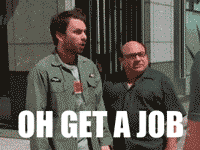
Data shows that the average worker today will hold about 15 jobs in their lives. That’s over 3 more than the average reported by the US Bureau of Labor Statistics in the 1960s. Today, the average length of employment has dropped in developed economies to under 5 years.
What that means for you as a growing company is that you’re likely to see more turnover in your team than a small company 50 years ago. However, you’re also likely to be able to hire people with a broader set of experiences than before. It doesn’t necessarily follow that someone who has left a job after 5 years or less has “failed” at that job. Still, it’s likely they’ve made mistakes and earned experience your company can benefit from.
The tech industry practically fetishizes failure, but only failure of a certain kind. Never personal failings. Always a failure of reaching too high, and striving too hard. Never a failure caused by a simple lack of knowledge or inability to compete.
As economics author Malcolm Gladwell noted in his seminal piece on college admissions, and later in his book The Tipping Point, the average graduate of an Ivy league school like Harvard or Yale fares no better in the long term than a similar student who chooses to go to a lesser school (or is not accepted to an Ivy League school). In fact, long term, the effect on individual performance of being placed in “prestigious” surroundings and being compared to ever more successful colleagues is to cause individual productivity to drop.
The thinking goes: if I always succeed, and yet others around me are always better than me, then I must not be worth as much as they are. The “little fish” syndrome that high performers experience can extend across their whole careers. Michael Lewis, another economic writer, noted in Flashboys: A Wallstreet Revolt, that high performing software engineers at the most prestigious financial firms like Goldman Sachs were typically paid less than their lower-performing counterparts at lesser firms.
The reason? The competitive environment in high-profile companies made these employees less aware of their value to the company. In effect, those who failed to get these jobs, or who failed to stay in them, ended up benefiting financially from not being employed in the top firms. In failing at some point in their lives, these “lesser” individuals learned something their top-performing peers did not know. They learned how to value themselves.
Michal Kratochvil: Budgetbakers CEO Talks Profitability and Pivots
/in Interviews, StartupYard News/by StartupYardMichal Kratochvil is a StartupYard investor, former head of Accenture Consulting for Central Europe, and currently the CEO of StartupYard Alum and popular personal finance management platform BudgetBakers (SY Batch 5), a role he took up in 2016.
BudgetBakers informed investors this month that they are now cash flow positive and, in fact, that monthly revenues had nearly doubled in just a few months, after 2 years of mostly steady growth. This news came just months after BudgetBakers nearly halved the size of its team, and pivoted to focus developing some the flagship app’s core features (like integrations with banks).
I sat down with Michal to talk about the last 6 months at the company, and what he’s learned from the ups and downs of running a tech startup for over 2 years. Here is what he had to say:
Hi Michal, so you’ve been with BudgetBakers for over 2 years now. What were the surprises? If you could go back to the beginning, what would you do differently?
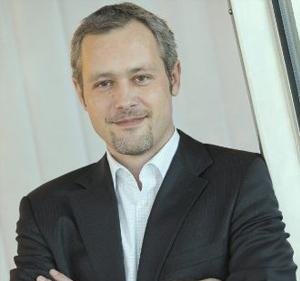
Michal Kratochvil, CEO at BudgetBakers since 2016
I should say I did everything perfectly, and everything went according to our brilliant plan, right? :laughs: Ok, there are always going to be things you would want to change because you know the outcome, but this is cheating. If you’re asking how I would have changed our general approach, there are a few things I would do differently. I would try and make some of the “surprises” less surprising.
How would you do that?
Let’s be concrete. When I joined BudgetBakers, Founder Jan Muller and I explored many options as to where we could take the company. I spent a few months getting to know all the possibilities, and coming up with plans.
We decided to focus on a couple of core activities. One of them: continuing to develop our B2C product, which was already enjoying a lot of popularity, with tens of thousands of active users (it was then in Version 2, we are now up to Version 6). Today we have added tens of thousands more, and recurring revenues have grown from nearly zero, to tens of thousands of Euros per month.
The other activity was to explore the second pillar of our business, which I believed was going to be our partnerships with financial institutions, particularly banks. There are a lot of opportunities for personal finance management software companies to help banks and their customers. Banks are very much in need of new ideas and new ways to serve their customers, and we have a personal finance product that people choose to pay for. So I think we have a lot to offer, either as a white label, or in some other form of partnership.
Of course, working with a bank is a difficult process, and matching up and actually managing to make a deal at the end of the day is very tough. They have dozens of priorities, you have just a few.
What I think is interesting is that my advice about the former (B2C), and my advice about the latter (B2B) will slightly conflict. I believe now that we had to be more patient when it came to developing our B2C product, particularly in our release schedule, and I believe we should have been less patient in our B2B activities with partners.
Why more patient with the B2C product?
You know, I think it comes down to just human nature. We keep making the same mistakes, because we don’t really change that much as people. We are startup guys. We want action! Get the products out the door.
When I joined the company, I saw that our dependence on platforms like Google Playstore and iOS App store was a vulnerability. You are getting most of your business directly from these places as an app maker.
What I did not expect, which I found out quickly, was that your fortunes can really hinge on these platforms on a day to day basis. When we went from, I think v2.x to v3.0, it was a major shock to me how violent the reaction was from the user base. Instantly, your rating drops from average 4.5 stars, to under 4. Closer to 3. Then slowly, over months, it starts to go back up as you fix some of the things you got wrong, and customers sort of get used to some of the changes.
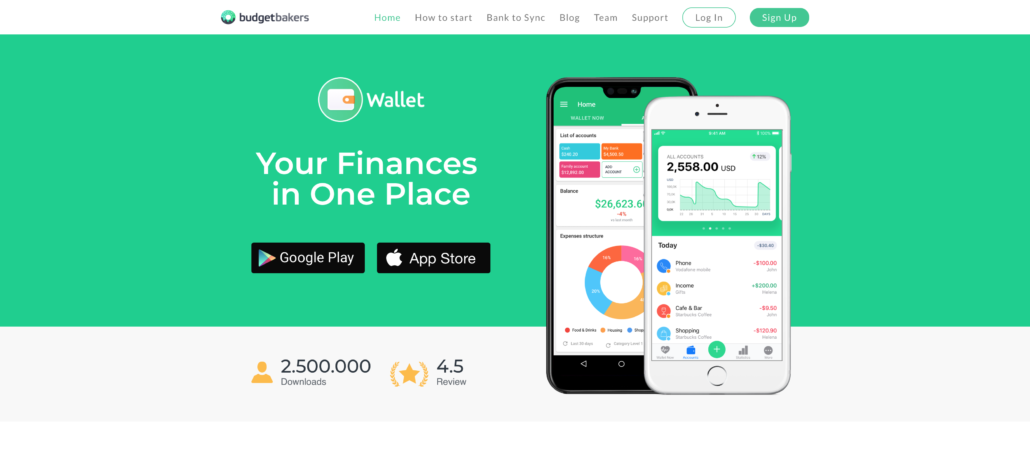
BudgetBakers provides a complete personal finance solution for individuals, families and small business.
Why does this happen?
Please, if I knew why, then it wouldn’t happen. :laughs: I think people just do not like change. When we make major changes to the apps, even when we have to make them and the long-term results will be better for the users, still nobody likes change. You moved that one button, you disrupted my flow in the app, so I’m pissed. One star. That’s what happens.
Not to mention, there are bugs that appear when you make major releases. This also provokes a harsh reaction, especially from your biggest fans.
So how would you try to be better at this?
What I would do differently, which frankly I have still not gotten 100% right, is to make us a bit more patient with the release of a big new version, and try and take the release in smaller steps. Try to create more of a transition in the product from one version to another, and game out more of the steps needed to get from here to there.
You need a bunch of things to work really well in order to push a major release. You need to migrate data and settings, you need to create a path for the users to move from the old UI to the new UI, and still be comfortable with the product.
We do testing, and we try to get everything working, but if I’m being honest, the temptation is always to push too fast, and to get the release out before it is really ready. I am saying this, knowing that we will still want to move too fast in this regard.
Do you think you will ever get the timing exactly right? This is a problem even for huge software companies.
I think it will never be totally right, but it can definitely be better. What you do not want is this sudden shock reaction from your userbase, who are suddenly giving you one-star reviews because of what is really a dumb mistake, or a series of small errors that can be avoided.
As you grow in maturity as a company, you have to get better at this, because your customer base is growing also. It is starting to include people who do not have patience for these kinds of issues. They don’t know the history of the product, and their level of engagement is not as deep. You can become really invested in big changes to the product, and then fail to explain these changes well or to justify them to the users. Then you have problems.
We are no longer in the land of early adopters at BudgetBakers. Our hardcore, long time users, while they are still really important to the way we think about the product, and test the product, are not the average user anymore. They become increasingly the edge case, and this means you need to be casting new hooks and talking to less engaged customers as well.
I would say our power users are 20% of our paying customer base. So the 80% are the silent majority, and these are the people who you need to aware can very quickly change their mind about you. These are also the people who will not tell you what they need. You have to really dig in to understand them. They won’t spell it out for you.
Your 20% might be very vocal about changes, but they will not walk away either. What they tell you is important to them, may be important, or it might not be. The more casual users, who are seeing you in a less personal way, can be less forgiving. If you don’t give what they need, they go elsewhere.
Part of growing your product maturity is to understand that your customers’ actions are more important than their words. If people complain, and yet we can see that they are using the product, maybe even using it more, then we should take this under consideration. Everyone likes to complain about changes.
[Author’s note: at the time of writing, the current rating for BudgetBakers’ flagship app, based on nearly 89,000 reviews, was 4.5 Stars on the Google Play Store]
One of the biggest mistakes you can make is to deprecate a popular feature without a real replacement.
Yes! That is a huge danger. Worse if you really don’t appreciate how important something is until you take it away from your average users. That can be surprising. Every time we do a big change, it does surprise me, even though I know now to expect this.
Just spending a little more time on something and getting beyond “it works, get it out the door now,” is what we have to work on. Just sleep on it, and play with it for a little longer. 3 weeks more of testing. I keep saying this, but every time the temptation is the same, to rush the release. You want those new features to be out in people’s hands, and you want that feedback.
It’s a bit of an addiction, maybe. We can’t stop the cycle. It’s like the binge and the hangover. You load so many things into the big release, and then you deal with the hangover, which is negative feedback, complaints, etc. You feel that all the way down your funnel, for weeks and months.
In Node5 where we work, as you’ve seen yourself, there is a sign about “the better is the enemy of the good.” This is it. We always want to be better, but sometimes you just have to be good.
Mentor, Investor, Startup CEO: Michal Kratochvil talks about life at StartupYard
StartupYard investor, mentor, and CEO of StartupYard alum BudgetBakers, Michal Kratochvil joined the world of startups after a career in corporations as Managing Director of Accenture Consulting in Prague. Michal gives us an idea of how working with startups has changed his view of business in the past few years, and how he became a believer in Acceleration.
Posted by StartupYard on Monday, January 15, 2018
In 2017, Michal spoke on video about his experiences as a StartupYard investor, mentor, and CEO.
So be more patient with your release schedule. What about being less patient with your partners?
Let’s say not “less patient,” because you have to be persistent in this business. Instead, let’s say: “more opportunistic,” or “less confident,” about the likelihood of any one deal working out.
A big danger for any small company, particularly just after raising a seed investment as we did, is that you commit too many of your resources to one deal. You can spend a lot of money and effort working on this one deal, and if it falls through, for whatever reason, this is money that is not coming back.
This can be just bad luck. A deal can fail to happen because somebody changes positions, or gets fired. That happened with us. The deal we hoped would happen just didn’t. It not in our control, nor in theirs. It just didn’t happen.
So if I had this to do again, I would remind myself that you need to be constantly building up your pipeline of opportunities. You can’t stop building a pipeline, because when you stop, you inevitably become increasingly dependant on what others decide to do. Basically, more dependent on chance and luck, because you aren’t making the opportunities actively.
When you are working towards one particular deal, you get focused on the value this deal can provide for the company. However, that deal is worth nothing until it is signed. Until it is signed, you need to be constantly working on alternatives in your pipeline. That is a best-case scenario, which is that you have to tell partners, “sorry, we made another deal.”
You know, going back to someone who you dropped 6 months ago means you start the process all over again. You can’t afford to do that. They can move on in that time. You are basically starting at zero, so you need to be building that pipeline until the moment you make a deal.
Do you have a new appreciation for the role of luck in this process?
Yes, in a way. Of course luck doesn’t matter if you don’t do the work. We did well by really investing in our technology and building up our products from the ground up. We did the work. At the same time, this work in the case of this particular partner, didn’t pay off. It was bad luck.
That being said, this same hard work can pay off in ways you don’t expect at first. When this deal fell through, for example, we had to make a really hard pivot to focusing on growing our B2C product faster, and adding more features that we were very sure would attract more customers.
As a result, we sat around really asking ourselves: what can we do in a matter of days or weeks to increase the sales of this product? That led to some big changes, and as we’ve seen, some dramatic results in the end. Our revenues basically doubled in a few months.
We absolutely could not have done this if we had not been investing well in the development of our backend. We would not have had this resiliency that we had, and the pivot would not have worked without that.
Still, and again, there was an element of luck here as well, in that in the moment we turned away from the B2B business, there was a new opportunity in the B2C space that was just opening up. I’m talking specifically about the ability to connect our user’s accounts directly with their banks, so that they can get a view of their finances without doing any manual data entries. This was the perfect moment to really focus on that functionality, and as a result we made a deal very quickly with a big data provider to connect with two or three times more banks than we had before.
What have been the hardest moments in the transition to a cash-positive operation?
When we had to make this particular pivot, we had built our team with the hope that we would make this B2B deal. When it didn’t happen, we had to change the team. Letting people go and shrinking the team has been very tough on us. No easy way to say it. It is not fun.
I have plenty of experience with this, but quite honestly, it is not something you want to get used to. It is not nice, and it does hurt.
You don’t have to talk about that…
Well, it is fresh, but also there are some things I think we can learn from it. We can do better, always. I want to be clear first of all that I still believe in each individual that we had to let go. This was not about them, but about where we needed to be as a company. That is important to emphasize for me: it was never a mistake to work with any of them. If I could keep them all, I would.
Have you learned something you didn’t know about building a team?
Yes, I always believed that you need to consider several things when hiring someone. First: you need to consider the immediate goals of the company, and the talent you need for those. Then you need to consider the long-term health of the company, and just as importantly, you must always consider the personal development of the people you hire.
I believe strongly in this, that you must invest in people when they join your team, and also in the case that they may choose to leave, or you are forced to let them go. Still, I believe we owe it to people who we hire to see that they land in the right place. I’ve put a lot of effort into making sure that these people have their next steps and are secure. That’s something I believe we promised them from the beginning, and you must keep your promises.
I’ve been managing people for 25 years. There are those managers who keep their promises and commitments, and those who don’t. If you do keep commitments, and if you are focused on the good of your employees during and after their time with you, then you are going to have a better time in life, and an easier time finding people to work with you.
But hiring for a startup is different than hiring for a big company…
Yeah, because the promise is a bit different. You are building this little family, and you’re asking people to be more flexible, and find their role in the company over time, instead of having that pre-defined by an HR department or something.
That means to me that I have asked people to have faith in me and the company, and I have put faith in them as individuals. I could not sleep at night if I did not believe I was doing all I can to help those who have helped us. That is a core commitment that you make to people as a leader. You must follow it through.
Now, as to keeping your promises, I think one thing I would do differently is to work harder not to overpromise on our ability to keep the team the way it is. I believe we did well in this, but there is room to do better. To make clear, also to ourselves, that certain people are being hired for a short period for their skills, and others are being hired for the long-term goals of the company. If you are clear about this with your hires, then you get the right level of commitment going both ways.
I wanted, because this is a startup and we are such a small group, to make everyone a part of the core team. The truth is, not everyone is in a position to be in that relationship with you, and in many cases, it would be better to treat them as more “true freelancers,” rather than to try and force a match with your internal culture. You need to have a clear idea of what kinds of people you will need when you go through a squeeze, and which ones will be the first to leave in that scenario.
You have to make clear the stakes involved with someone when you hire them. Let them know what you need to keep them around, and get a clear idea what they want to get from you as well.
It makes no sense to try and makes someone a part of your work family if they are never going to stay more than a few months. However it is also a waste to treat someone as a contractor for years, and not show some commitment from your side. This is a balance I always think we can do better.
Any last piece of advice for any other StartupYard alumni facing the same dilemmas?
As I said, better to oversell than to undersell. Always build your pipeline of partners and customers, even when it seems like a deal will happen. Always have an out, and a B-plan that is already underway. If you find yourself and the whole company depending on one event that is beyond your control, then you have already dismissed too many good options.
You will not fail if you can continue to add value to the company in some way. If what you do can be made to impact your bottom line, then you’re probably doing the right thing. Investing in your core technology, all the time, is one thing you can do. You should always see a few steps ahead: “ok, if this deal doesn’t happen, how do I make this investment pay off anyway?” I would say this has been key to us turning a profit this year.
Chris Cowles: The Importance of Getting to No
/in StartupYard News/by StartupYardHi StartupYard people. Hello, current Batch X startups and fellow alumni! The StartupYard Team asked me to share with you some of my accumulated wisdom as a StartupYard alum and a startup founder (Blocknify, Batch 9).
I honestly didn’t think I had a lot to say, especially since my startup Blocknify, which allows people to sign documents securely in the blockchain without their document touching any external server at any time, is still new, and we are still in the early days of acquiring customers and finding our product/market fit.
But I realized as I was preparing to say that I don’t have anything to contribute, that I actually do have one thing to contribute, and that is what I will call “How to get to no.”
How to Get to No
I spent some years as a consultant working with large corporations before co-founding Blocknify. One thing about working in a big corporation is that you never see the whole processes you work on. If you are in sales, then you don’t see the product being made. If you’re in products, you don’t see how sales work.
This leads to a certain way of working and thinking, which I guess I would call “accumulating yeses.” That means, if you’re part of a big organization, you are always trying to find ways to say yes to things. Yes, we can sell you a product. Yes, we can do that feature. Yes, that is a good idea. Etc. Getting a yes from your supervisor or your customer is the goal, and getting a no is a failure.
We like to say “yes,” and we rarely have to say “no.”
As a startup founder, I think the most important thing I have learned so far is that it is incredibly important to get to “no.” In fact, if people are not saying “no,” then it probably means you are missing something.
If you are not saying “no,” then it probably also means you are not focusing as you should.
I want to specify why I think this is an important mindset for startup founders with a few examples.
Getting a No From Customers
A few weeks ago I was invited to meet with an innovation team from a very large company. It doesn’t matter which one. Imagine any big company with millions of customers.
They sort of know that we help organizations handle contracts securely. They also know that handling contracts and agreements is a big struggle for them, both on the customer side and on the supply side as well.
When I show a group like this our product, we get lots of this reaction: “wow this is so great! We need this!” It feels really good, and it’s nice validation that you’re doing something your target users like and want.
Except for one minor problem. Will we make this sale? No way in hell. At least not anytime soon. The customer is just too big, has too many needs, and isn’t ready to work with us, like we aren’t ready to work with them. We have to qualify them out pretty quickly not to waste a lot of our time on something we won’t be able to reasonably do.
Yet this is exactly the kind of situation that is toughest for a first-time startup founder to navigate. That has been my experience because you so want to accumulate those “yes” answers. Even if the yeses you are getting don’t help you that much, we are comforted when we hear it.
When we first started having these sorts of meetings, I think I personally wasted a lot of energy accumulating yeses from people. Do you like it? Yes. Can you show it to someone else at the organization? Yes. Can we talk again? Yes.
Believe me, you can bounce around for a year getting nothing but yes from everyone in the organization, and still, nothing happens.
What you find out quickly is that when people like you and your ideas, they have a lot of ways to say yes, and few ways to really say no. Like: “is it realistic that we will be able to make a deal with someone at your company before we run out of money?” Nobody can answer that honestly. They want to say that they like you and that anything is possible. They don’t want to discourage you.
In startups, not everything is possible. Sorry, not everything is possible. You are time limited. You are resource limited. Picking what is most possible and executing on that takes a lot of focus, which is the only strength you really have as a small company. So I have learned that when I hear “yes,” I need to keep going until I hear a “no.”
For example:
“Do you see this as valuable for your business?”
“Yes.”
“Can we take the next step toward an agreement?”
“Yes.”
“Can we get it signed within 6 months?”
“Yes, it’s possible”
“Can we do it within 3 months?”
“Eh… not sure.”
Ok, so the “me” from my corporate life would stop after the first few questions. Can we move forward? Yes? Great. I got the yes. I don’t need to go further. This results in a lot of back and forth with little action and a lot of energy wasted.
The startup “me” understands now that I have to press forward and get the no, so that I at least understand what I’m really dealing with. What are the actual barriers to this actually happening? They can be small, or they can be way too big.
Qualifying new opportunities out this way takes vulnerability and requires you to be brutally honest with them and yourself. However, I believe people are attracted to vulnerability and honesty. Without bringing the conversation back to reality you are missing out of the other benefits they can provide such as improvements, understanding their sales process, and being advocated for internally or externally.
I think there is this need from startup founders to always be getting good news. You need bad news too. You have to have it to move forward.
Getting to No With Investors
There was a similar learning process with investors. What I thought would happen was that we would pitch to people, and they would either “pass” or “be interested.” If they were interested, I thought that meant that there is a chance of a deal happening.
Sometimes there is zero chance of a deal, but if you don’t get to no, you’ll never figure that out. No one wants to tell you no. Just a lot of time spent making more and more spreadsheets and presentations.
What you learn is that many investors basically never say no to your face. It’s similar to how customers work. Why say no, when you can say, “let’s stay in touch,” or “it’s interesting, but I’m not sure about x.”
Very few investors will just tell you “no, you’re not for us.” You have to make them get to that point of saying no. If you pitch someone, and they have all the information they need, then you need to know what’s going to come next. A no today doesn’t mean a no forever, but a yes today doesn’t mean a deal will happen.
“Do you like the idea and team?”
“Yes.”
“Would you be interested to discuss an investment?”
“Sure.”
“Do we meet your requirements for an investment?”
“We need to determine….”
“Based on our conversations will you participate in this round of funding?”
“No…”
If I don’t get a clear idea of what “no” is, I can’t very well judge how much time I should spend on trying to persuade that investor. Just like the customer, if they can’t buy, then I shouldn’t spend a lot of time trying to sell. I get to no, and I move on from there.
Getting a no does not mean you should necessarily give up. It just clearly establishes what the challenge is and where they stand. Maybe you don’t meet the requirements right now, but you can at least find out what they are. If you don’t ask, you won’t know.
Just recently we got to a “no” with an investor that we liked and liked us. We see this as not the end but the beginning of a new relationship. We will keep them updated and ask for investment advice and connections, which is hard to ask for during investment discussions. If we had not gotten that “no,” then our relationship would not have evolved at all. Now we can move forward.
Sometimes, many times, the investor you are talking to is saying yes, and someone above them is saying no. That’s really important to understand, and to get to the bottom of where the “no” is coming from. Can you work with that no and make it a yes? Or is it not worth your time?
Even when you are ready to make a deal, again, you have to find that limit – that point where they will say no. How do you know the terms you have are the best you can get? How do you know an offer is the last one? Because you asked for something even better, and they said no.
Getting to No with Your Team
Here is yet another way that “getting to no,” is really beneficial for a startup founder.
When you are dealing with your team members, whether it is co-founders or early employees, or whomever, again it is in people’s nature to try and not disappoint you.
As I learned in this process of creating a brand new product out of nothing but an idea, you can ask people like designers or engineers “can we do this?” And the answer will almost always be some form of “yes.”
When you get into the details, you do find out that the answer might as well be “no” in some cases. Can we do this in the required amount of time? Can we do it within our budget? Can we do it safely, securely, etc? Now we start to get to some “no” answers.
That does not just apply to knowing your limits. Sometimes it is about knowing your capabilities and figuring out what it practically takes to accomplish the project:
“Can you do this in a month?”
“Yes.’
“Can you do it in 2 weeks?”
“Yes…”
“Can you do it in 1 week?”
“No.”
If you are managing a team for the first time and trying to understand what you can reasonably accomplish, getting to that lower limit is also important. If I say a month, it might take a month (or more). But if I find out it’s actually possible in two weeks, or one week, then I might get it in that time. People who work for you also need to know what you expect, and what is expected of them. It also can serve as a way to break down and talk through assumptions they may have.
“Can you join us in this startup?”
“Yes.”
“Can you quit your job to do it full time?”
“Yes.”
“Can you put in more than 40 hour weeks for low pay?”
“Well… not sure.”
Love to Hear “No”
One thing I learned in StartupYard was to have and express an opinion that forces your audience to agree or disagree, i.e., be controversial. I have realized more and more the truth in this teaching. The fact you are doing something on your own is already controversial, so why stop there?
You can’t be going with the flow if you are supposed to be disrupting the flow. This even applies to yourself.
Recently I was talking with our designers and I told them to push the limit and forget about all my preferences and suggestions. This process resulted in an amazing redesign. I’m not comfortable with all of it but that is the point. I wanted them to get me to “no.”
Be authentic. You don’t have to be friends with everyone. Don’t “get along” with everybody all the time. Don’t take yes for an answer, basically. Get to the “no.” Find what the limit is on what you can do and what people are comfortable with, and push to that limit as much as you can.
I asked Lloyd if I could keep going with this analogy for a few more pages, and he said “no.”
E.ON COO Tomáš Bělohoubek: Mentoring is a Training Camp for the Mind
/in Interviews, StartupYard News/by StartupYardThis year we were happy to announce that E.ON, one of the world’s largest electric utility service providers based in Germany, and operating in 30 different countries, had joined StartupYard as an official strategic partner. What does a strategic partnership between a tech accelerator and a major corporation really look like? For E.ON’s views on the benefits of cooperation and involvement with the StartupYard program, I asked E.ON COO and StartupYard mentor Tomáš Bělohoubek to talk about his vision for future cooperation with high tech startups.
What inspired E.ON to become a strategic partner of StartupYard? What are you hoping to accomplish?
Our cooperation with StartupYard began about two years ago with the participation of E.ON managers in the SY mentoring program. There we got the opportunity to regularly participate at SY events, get in contact with a great selection of startups and learn about the acceleration approach.
The idea to enter a strategic partnership with SY was born after E.ON implemented its “:agile accelerator” in Czechia. As our accelerator is new on the market we don’t have the network and capabilities to fully conduct our own scouting for suitable startups. And frankly speaking I do not aim to develop this capability fully in-house, as I do not believe such large corporation can be its own honest startup disruptor.
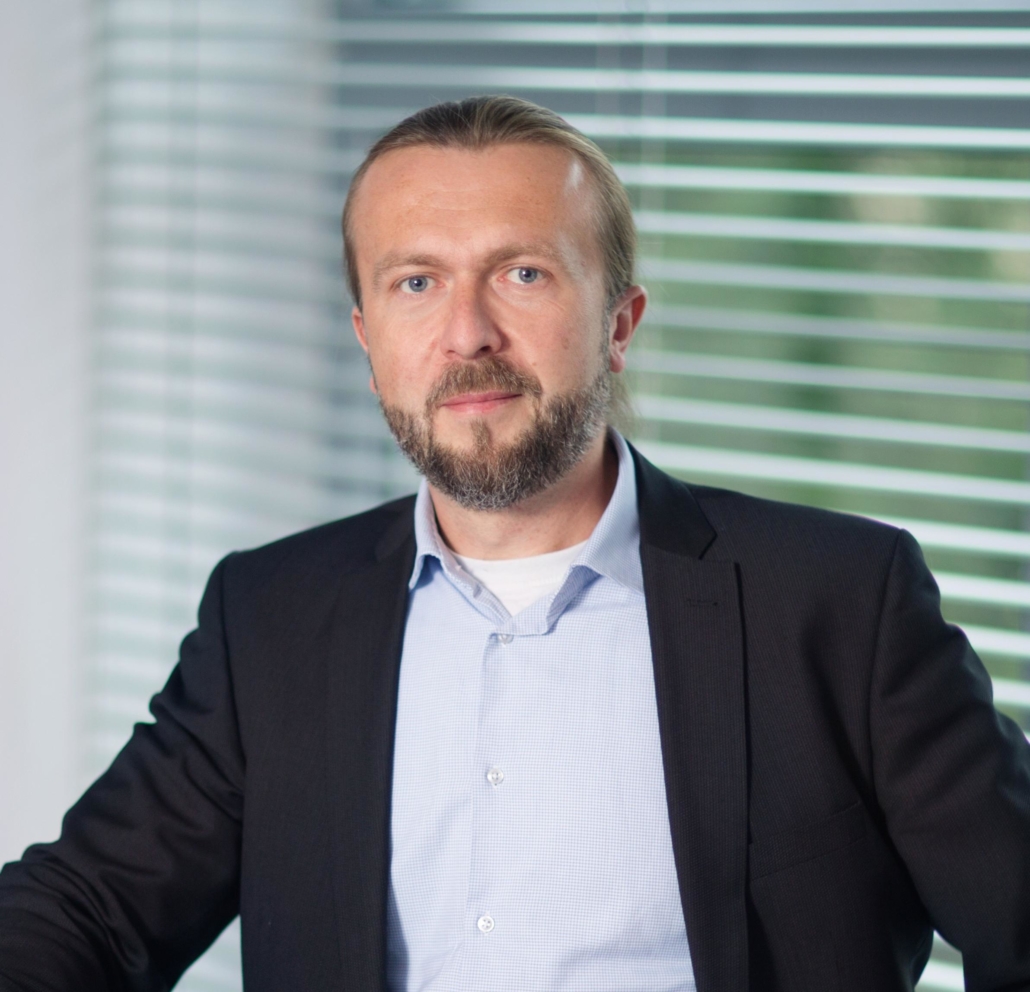
Tomas Belohloubek, COO, E.ON
StartupYard is thus an ideal partner for expanding our network and scouting for new potential startups. Additionally we are very excited about SY’s cooperation with the GAN (Global Accelerator Network), which gives us access to an international pool of selected international top startups.
“Bringing in-inovations” is not just an empty phrase for us. It’s actually our main challenge. It’s been fashionably late for companies like ours to engage with startups and accelerator programs, as an image building exercise, and potentially as a way to scout out the best new ideas.
This indeed only touches on the surface of what companies like E.ON should be doing with the startup ecosystem. The truth is that in big companies with extensive operations and deep knowledge of their industries, there is a lot of creative potential waiting to be unlocked.
And interacting with “outsiders” (actually here I play with both meanings of the word), allows us to take a fresh view on possible future and sometimes even helps to reconfirm our own visions of our industry and enterprise.
So finally it is related to a change of thinking and approach and deeply connected with a change in corporate culture. Even in big companies, people have innovative ideas, but especially in big traditional companies the rigid system usually prevents them from making it happen. Our goal is to change it and create a bandwidth to help innovations happen.
So, my view is that rather than treating high tech startups as a force that will either work for or against us in the future, I believe E.ON must actively offer our own deep experience and reach into our industry, to make our organization an open testbed for solutions that we don’t focus on yet; not because we don’t know these opportunities exist, but because we do know working with startups is about challenging your focus and your basic assumptions, and also helping startups to do the very same.
You’ve mentioned using your interactions with startups to challenge your own thinking. How does that process work for you?
We send top executives and other team members to meet with and mentor startups in programs like StartupYard. As I said, this is often viewed as a kind of image building exercise. Many companies do this because they wish to be seen as engaged with startups, even if there is only little motivation in the corporation itself to adopt or internalize any of the learnings this process generates.
A good mentorship experience forces you to talk not only about new ideas, but also ideas you may have had in the back of your mind for a long time. It makes you suddenly connect things that have been lurking in your subconscious, sometimes for years.
Working within a big system like E.ON inevitably causes a tunnel vision syndrome. Mentoring takes us away from this for a kind of training camp for the mind, where we expose ourselves to people who are less bound by the usual rules. Its been always refreshing for me to talk with the passionate teams about their products and ideas.
It can make you think: “oh, doing this is not as complicated as I thought.” The outsider view can clarify your biases and challenge them.
Likewise, I have seen that pushing the startups to confront the realities of the wider world of corporations helps them to get a better picture of the challenges they will face. Every startup must have some naïveté to get started, otherwise they would never choose to do what they’re doing, and face the incredible risks they face. We can help them if only by curing them of illusions, and then being a touchpoint for them to get a deeper understanding of the world and industry they are trying to reform.
We have five members mentoring at StartupYard already, and my expectation is that their experience will show more of our colleagues the true value of giving back to people just starting in business.

What do you see as the most important thing E.ON can offer startups?
Startups may sometimes view us big corporates as kind of bunkers or reinforced military bases, against which they have few tools to compete in “open battle”. We often hear from startups that either corporations are not responsive, ignoring their ideas, or on the other side might “destroy” them, or “invade” the market space they are trying to attack.
There is a lot of truth in that actually, yet I believe we have mutually lots to offer – if well managed!
Startups do offer their ideas, MVPs, or final products on open basis, whereas Eon like company offers real live testing and scaling.
As mentioned already, we do aim to create testing platforms for new ideas. Sounds very simple, but those who tried, know it’s a real challenge. It touches not only the technical and process boundaries of the somehow calcified corporations, but also mindset of the people and general culture. I’m however convince we are one of those able to sort these barriers out.
And how does your accelerator program work?
Our new :agile startup accelerator program is able to give up to six start-ups per year the chance to accelerate their businesses with selected top specialists in the field. We currently run two batches per year with an acceleration phase of three months and a budget of up to €10.000 per start-up for selected trainings, travel expenses and office space.
After the acceleration phase, every selected start-up will be able to pitch their idea in front of E.ON’s top management and a selected audience of investors and top specialists. On a larger scale, the E.ON group can also offer cooperation across Europe, and offer also the chance for piloting new ideas and an investment partnership.
In terms of the Czech startup scene, we will offer two startup pitch days per year that will in the future be publicly accessible. There we would like to invite rising stars in Czech entrepreneurship, and people from the startup scene, accompanied by international guest speakers.
In the long term we would like to create an image for E.ON that represents us as a strong independent partner for the development of MVPs and use cases with startups, as well as to create a pioneer network in the CEE region around energy innovation and sustainable development.
Meet Deaf Travel: Building a Better Internet for Deaf People
/in Interviews, Startups, StartupYard News/by StartupYardDeaf Travel, the last of the StartupYard Batch 9 startups to be interviewed, is our first non-hearing team in the program. They are a team of Deaf entrepreneurs who have dedicated their careers to building up the Deaf community, both online and offline. Their mission today is to create an online platform and community focused on helping Deaf people to enjoy travel and adventures with the same depth that hearing people enjoy.
They are doing this by bringing together public attractions and organizations, with the worldwide Deaf community, and offering them a space where the needs of Deaf tourists can be met with Deaf-friendly video content, interactive maps, and other features that make foreign travel enjoyable and interesting. I sat down with CoFounder and CEO Jan (Honza) Wirth to talk about his team’s vision for the future of Deaf tourism and the internet. Here is what he had to say:
Hi Honza, first of all we should acknowledge that there is someone else in this conversation, Tim, your interpreter. As a deaf person, what do you find most challenging about communicating with hearing people?
Most hearing people have many misconceptions about the Deaf. They think we have less intelligence or skills and feel we can’t do many things, such as drive a car, work, etc.
These misunderstandings stem from the communication barrier we have between hearing and Deaf people. If we had a common language, then many of these false ideas would solve themselves. Hearing people can learn sign language, but a Deaf person cannot learn to hear! As a Deaf person, I deal with these barriers every day.
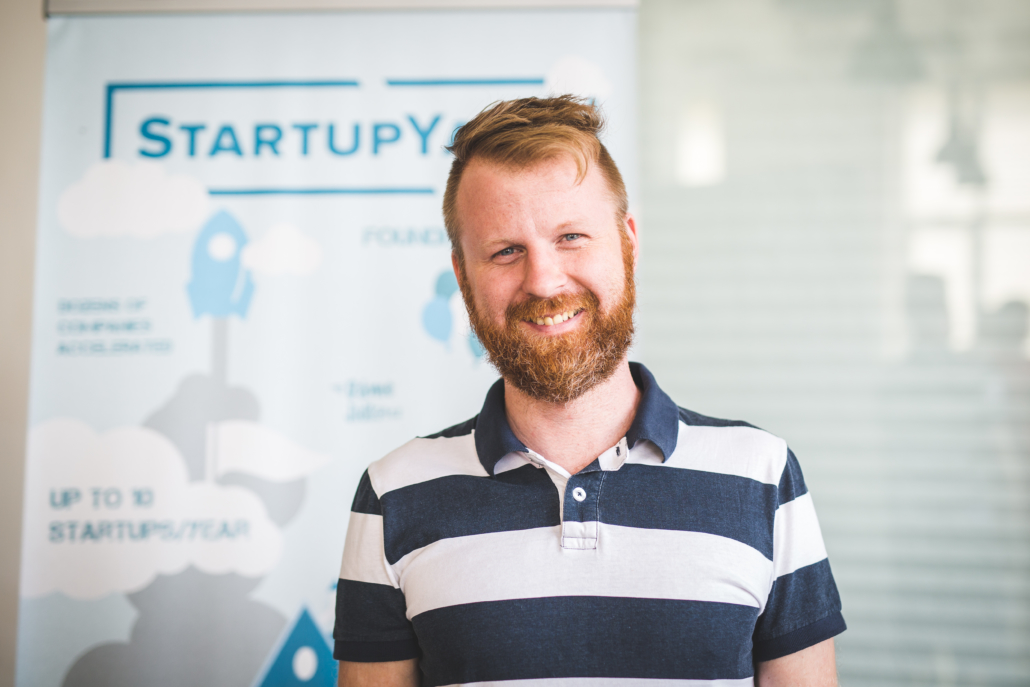
Jan Wirth, CEO and CoFounder of DeafTravel
One of the ways we can solve this is through interpretation. In fact, what many hearing people don’t realize is that interpretation in our own sign language is far superior for Deaf people than simply reading. Written and spoken languages, such as English or Czech, are native for hearing people, but they are always second and third languages for Deaf. I can write and read in English and Czech, but for me that is a very different experience than it would be for a native speaker. Writing is the same: we must translate our thoughts into a foreign language in order to write. Thus even in writing, an interpreter is very helpful.
I use different methods to try to break through the communication barrier. If I have to communicate about something very important like a mortgage, legal issue or a job interview, then I use an interpreter for clear understanding for all. In common interactions like a restaurant, ticket office or a shop, I can use gestures and writing back and forth. It is for deeper discussions that an interpreter becomes essential to bridge the divide.
How did you come to found DeafTravel, and why is a for-Deaf, by-Deaf travel platform so important to the Deaf community?
I have been dedicated to improving the Deaf community my whole life. I am the founder of our first community center in Prague, called Znakovarna. This is a place where Deaf and the hearing can gather to discuss new ideas and learn from each other, and support each other and the community. We host seminars, talks, and other Deaf-oriented events. Deaf Travel is one idea that comes from seeing what Deaf people talk about and what they really miss in the market, which is a way of getting this Deaf-friendly experience wherever they go.
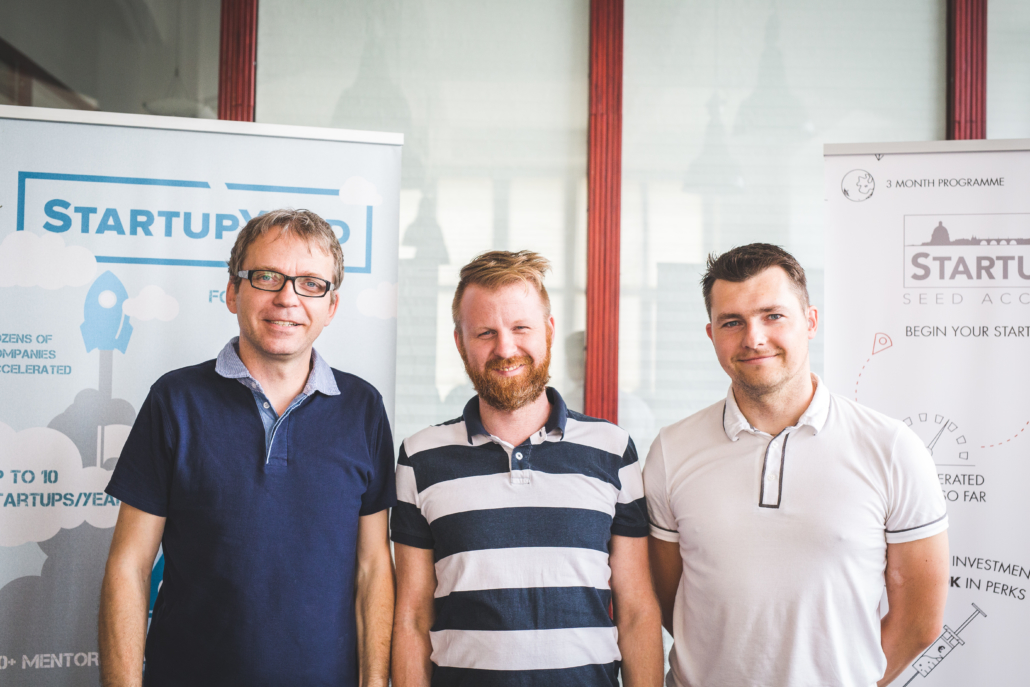
The Deaf Travel Team. The majority of the founders are deaf or hard of hearing.
Nowadays, smartphones are common within the Deaf community and they have a huge positive affect for us. Such technology and the ecosystem of apps allow us an equal footing for chatting and staying in touch with our friends and family via video, or text. We can use our native sign language to make quick interactive video chats. We can even use some interpreting services via our mobile phones, which opens doors that have been shut to Deaf people until now. It is a great time to be alive.
But mobiles haven’t solved all the everyday barriers for us. Yes, the tech is amazing, but they aren’t the ultimate answer for the barriers we have, especially when we travel. In the USA, the benefits for the Deaf there have skyrocketed, but these don’t spread worldwide for various reasons.
One of those reasons is that European and worldwide Deaf communities have many sign languages, just as hearing people have many languages and cultures, and so there are always added challenges for smaller Deaf populations to find content in the sign language which they use every day. Those of us who travel, especially in Europe, learn International Sign System (IS), which is not an actual language but follows the rules of most sign languages and uses signs from various sign languages.
Let us not forget, even when a Deaf person does understand multiple sign languages and written languages, this does not change the fact that other Deaf may not have those skills. Hearing and sighted people take the internet for granted today. You can Google anything, and find whatever you are looking for. But how does one “Google” content which is in a sign language? How does one tell Google the signs they want to search? Of course these functionalities are not available.
Think of it like this: imagine the internet was only in Chinese, and to use Google, you had to learn how to read and write in Chinese. Not impossible! But very hard, and very unnatural. You would not find the internet so useful if the only way you could communicate and consume content was in a language that is not your own. Thus, Deaf people are discouraged from creating and sharing content, because other Deaf people cannot find and use that content very easily. It means that for many purposes, the internet as you understand it is beyond our reach.
On the close horizon, we have newer tech, virtual reality (VR) and artificial reality (AR), that has great potential for us all. For the Deaf it could mean even better access to information, because we are such visually-oriented people. VR/AR means more access to interpretation and visual information displayed in a Deaf-focused way.
Still these technologies are yet to become reality. We want to begin to change that, and we understand that the way to do it is to begin using what we have to solve the problems of Deaf travelers. Deaf Tourism is on the rise, and we can feed and encourage this with content and a community in the format that Deaf people will really be able to use, and ultimately contribute to themselves.
Our platform can give deaf travellers access to information equal to hearing travellers, just by using the smartphones or other devices that Deaf people already have. It’s a visual platform, using maps and images to help Deaf travelers find content focused on the sites they are visiting. Eventually, we will be able to provide a forum for the Deaf to create and share relevant content, based on real world landmarks, much in the way that Yelp, Google, or Facebook function for hearing communities today.
Many of our mentors and investors have been surprised to learn about the difficulties that deaf people have with getting information in a format they can use. Can you talk about why reading and writing are such a challenge for the deaf?
There are two main problems that are caused by many forces, socially, economically and politically. In addition, these problems are worldwide in varying degrees.
The first is that education for the Deaf has been historically lacking, sometimes pathetic, and often downright horrible. For most of history, we have been treated as mentally disabled by society, because people did not understand that we can learn and think just as hearing people do if we are educated in a way that makes sense for us.
The curriculum in most Deaf schools is not the equal to the what is taught in hearing schools. As well, the Deaf students who are sent to the hearing schools do not always have a quality interpreter. These same students also have less socialization with their hearing peers, since the language of the hearing school is spoken.
The second problem in both of these types of schools is that the teachers usually don’t know the students’ native sign language. Which means the student is using an interpreter, or even nothing in many cases. The student is simply expected somehow to adapt. Most deaf schools in the world focus on making the students learn to speak, and the actual education is dismissed as less important. This is sad, since teaching speaking to Deaf is rarely successful or needed.
This is treating the Deaf as if their goal in life should be to compensate for their lack of hearing. I think that’s just silly. I wish to live in a world where the Deaf are treated as different, and not as disabled. We can teach and learn from each other, and we have rich cultures and languages to draw from.
As I think the StartupYard team have learned from us during our time together, we can share our ideas and our dreams with a little shared effort. The Deaf have much to offer and indeed to teach the hearing, just as we have much to learn.
Let’s talk more about Deaf Travel: what does the solution look like today, and how can people use it?
Our first focus is on proving the value of Deaf content for travelers. We are doing this by focusing on getting landmarks and tourist locations and attractions interested and involved with the platform. This means creating content focused on these locations, that the Deaf can use in place of guided or audio tours, and also content that the Deaf can use to do their travel research, such as deciding what monuments to visit, and even finding Deaf-friendly services in the destination city or country.
This means a Deaf tourist can experience the story of the site in his own native language without being dependent on others. The Deaf tourist today has little freedom of action or choice in making travel decisions. If we do not depend directly on others to help us plan and navigate a trip, then we still must face a lack of depth and context in what we see and experience. Tell me how many times you would go to the cinema if the sound was always turned off? That is the experience we face almost everywhere, and the worst outcome is simply that we choose not to go somewhere new.
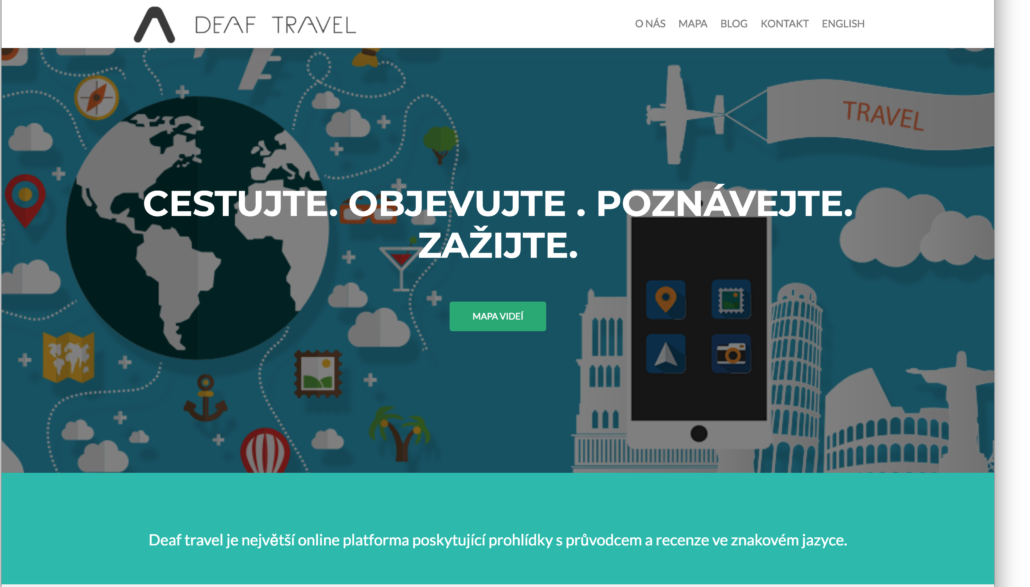
We want to create a way for Deaf people to enjoy traveling, and also a reason for Deaf people to travel and experience more. If more content and services exist and are accessible for Deaf people, then more of us will travel, and so even more demand will arise for these services. We want to prove now that such a demand does exist and that it will grow when attractions and cities invest in building up their ecosystem of Deaf resources.
What do you want Deaf Travel to be a few years from now? How will Deaf people use it in their daily lives? (note: talk about tripadvisor, Yelp, deaf reporting, etc)
It’s simple really. We envision individual Deaf travellers accessing our platform of videos via our Deaf Travel App. Similar to the services of Tripadvisor or Yelp, our app will be a community of amateur and professional deaf video “reporters”. Each reporter will upload their videos to our server and the community can search for, watch and review individual videos and locations, based on visual maps instead of text search. They will be able to use it in their daily travels at locations around the world.
The key is to create this connection between the “local heroes,” and the travelers. You can be a local hero in your home town, who makes videos and helps visitors, and you can benefit from the work of your fellow heroes around the world when you travel. You can also create content as a traveler, aimed at your own community, who may also travel to the same places in the future. This new online community platform will also be a place for promoting Deaf-owned or Deaf-friendly companies, Deaf events, interpreting and other services.
Deaf Travel will be supporting the community so that the community will support itself. What do you think happens when one restaurant in Prague becomes known internationally as the place to be for deaf visitors? I can tell you: it will be very successful, and this will allow entrepreneurs from the deaf community and from outside it, to explore new opportunities. It is a big, untapped market that is still invisible to most people.
How will Deaf Travel deal with the complication of having many different native sign languages that travelers know?
Yes, many people think that there is one universal sign language, as I mentioned. I’m not sure why! I mean how would you get people in every country to agree on one language when each culture is different? Yet people think we Deaf could do this ourselves.
Karlův most, Praha (ČZJ) from Deaf Travel on Vimeo.
Each community in each country has its own natural sign language which is connected to that culture, as all languages are. After all I am a Czech man in addition to being Deaf. I need a language that fits with this identity, and it is the Czech sign language. Each sign language has different dialects as well, just as spoken languages do.
How do we solve this situation of such diversity?Deaf Travel will use video reporters in each country to have that local sign language in the videos there, in addition these videos will have a second communication mode called International Sign System (IS). This fills the function that English fills for many international travelers.
Not everyone knows IS, but most Deaf tourists have learned it by travelling and meeting other Deaf in their travels. IS was developed by Deaf in the European region where many languages and cultures converge. It uses the basic visual grammar, syntax and structure that almost all sign languages have. It then adds clear vocabulary from various sign languages. It is not a pure language, but a good method for everyday communication.
Today you’re looking for tourist attractions to join you as partners to create quality content for their deaf visitors. That is hard to scale. Over the long run, how do you see the platform being monetized and growing as a business?
As I just mentioned, the community of travel vloggers and reporters all over the world will add to our video library quickly.
A traveler in Peru and a traveler in Germany could upload their videos during the same week, but from different trips, and thus we’ve increased our library by several short videos in two different countries in the same week. Those videos will be catalogued and tagged on the appropriate map for that region. The map with these pinpointed videos will be the growing visually searchable platform for other Deaf travellers.
Understand that the Deaf community is small and news always travels fast within our network. Awareness of Deaf Travel’s platform will equally spread like wildfire, because Deaf travellers will be eager to add their own amateur travel vlogs to the database alongside our professional ones to share their experiences, good or bad, with the community. Everyone has a need to communicate and to help each other. You just need a way to do it.
These videos will be accessible for free or for a monthly subscription price for our full-length professional travel vlogs. In the world, there are approximately 466 million Deaf and Hard of Hearing. 70 million of those use a native sign language, for those who do not, we will offer subtitles as well. So, the market potential is great and will sustain our mission of supporting the community by tearing down the travel communication barrier.
You’ve been our very first Deaf founding team at StartupYard. How has the experienced matched up with your expectations? What have been the biggest surprises?
Overall, the experience has been amazing. There were a few moments when things did not click with us, but I’d say 99% of the people we met and worked with were great.
At first, I was truly shocked that we were picked for StartupYard. I didn’t think there would be much interest in our project. Then after meeting so many mentors and EVERY one of them showed interest in our vision, our motivation increased exponentially. We now feel like we really have something that will make this dream of barrier-free travel a reality.
Perhaps I did not have enough faith in hearing people to see the potential that we see in this idea. However I have seen that this is a problem anyone can understand, and it has been wonderful to see that others who have not experienced these same problems can deeply empathize with it.
As the StartupYard team have told us many times, what we do must become somehow obvious on first sight to people with no experience of the problem. That is something I think we have accomplished and it is really exciting to be able to open people’s eyes to it.
What kinds of partners and potential clients are you looking to talk to right now, and what’s the best way for them to start cooperating with Deaf Travel?
That’s a great question. We’re looking for well-known tourist destinations that attract thousands of tourists every year. The kind of places that are famous and have a very interesting story to tell, like cities such as Prague, castles, zoos, museums, and other such attractions.
Lesser known sites are also of interest to us, because our mission is about equal access to information for our community. It is our way of supporting the social and civil rights laws in place now. We don’t want to be dependent on others to provide these services. We know what we want and need. The world has provided us with the political backing, and we want to partner with those who support this vision too.
We don’t need people to see this necessarily as a charitable or humanitarian activity. It is an opportunity for Deaf and hearing people to fill a great need that exists and to build new businesses and provide all-new services. Invest in serving the Deaf community and we will vote with our money just as everyone does.
Thus if you are a forward-looking institution or a business, that can see a great opportunity to lead the pack and be a magnet for Deaf tourism, then we want to talk to you. If you are an adventurous Deaf person who wants to serve the Deaf community, or an entrepreneur who wants to explore a new market, then we want to talk to you.

